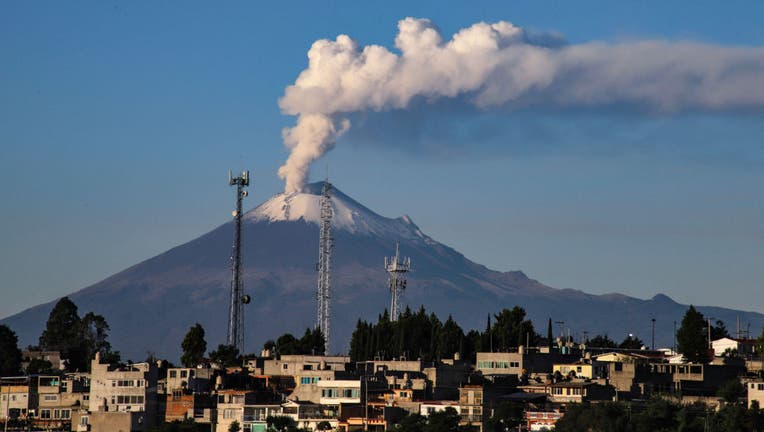Volcanic ash from Mexican volcano spotted over Florida

The Popocatepetl volcano releases a plume of gas and ash as seen from the town of San Hipolito Chimalpa in Tlaxcala, Mexico, on October 23, 2024.
SARASOTA, Fla. - Mexico’s most active volcano, along with the jet stream pattern, sent ash over the Gulf of Mexico and Florida on Saturday, allowing the emissions to be visible to pilots and sunset seekers.
NOAA satellites detected plumes that started from the Popocatépetl volcano and traveled hundreds of miles to the northeast.
According to the National Weather Service office in Jacksonville, Florida, pilots reported seeing the ash in the air near Sarasota, along Florida’s Gulf Coast, and if skies were clear, a colorful sunset was possible around elevated concentrations of ash.
Due to the minimal amounts of airborne material, there were no known threats to aircraft or a significant reduction in air quality in Florida, which was generally rated as Good to Moderate based on observations.
Closer to the volcano’s crater, flight operations into and out of Mexico’s Puebla International Airport were reported to be impacted on Friday and Saturday due to a significant ashfall in the area.
The country’s National Disaster Prevention Center reported observing emissions of water vapor, volcanic gases and ash from the mountain and the possibility of minor to moderate-sized explosions.
Popocatépetl has been active since 1994 and has gone through episodes of increased activity, including forcing 40,000 residents from their homes in December 2000.
In May 2023, ash emissions forced authorities to open evacuation shelters, close nearby schools, and temporarily shut down airfields, including Mexico City’s Benito Juárez International Airport.
Despite occasional increases in activity, the United States Geological Survey previously warned that Popocatépetl has the potential for severe eruptions.
The last major eruption was reported in 800 A.D., and if a similar event were to occur today, the USGS estimates that hundreds of thousands of lives would be at immediate risk.
Due to Mexico’s location along the Pacific Ring of Fire, the country is home to dozens of volcanoes, with several that have been active since 1950.
Estimates of the number of active volcanoes vary, but a survey by the Global Volcanism Program identified 35 volcanoes that have been active over the past 11,700 years.
Additional observations of ash over the Gulf of Mexico, Caribbean and Southeast U.S. are possible if eruptions coincide with surges of upper-level winds as they generally move from west to east across the region.

